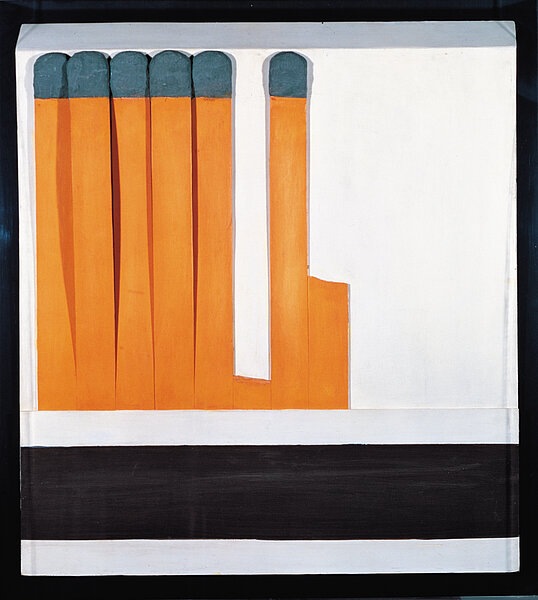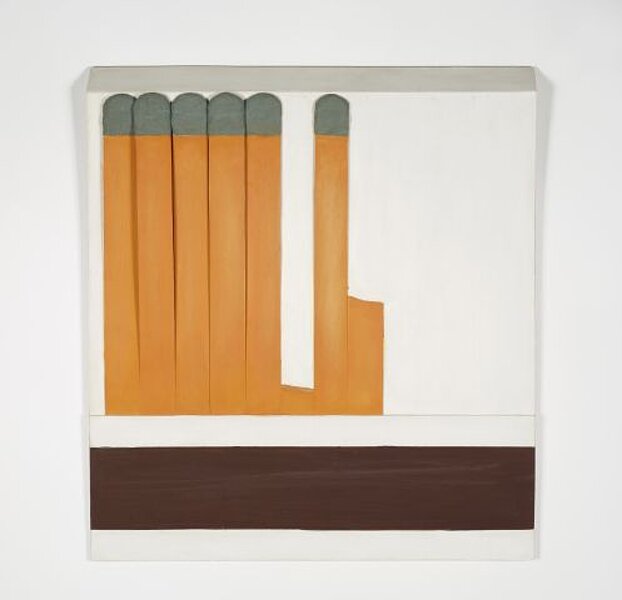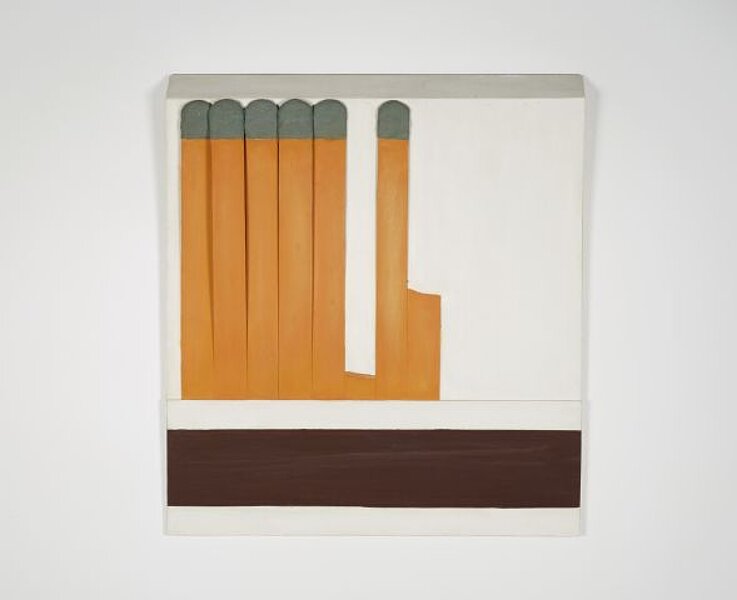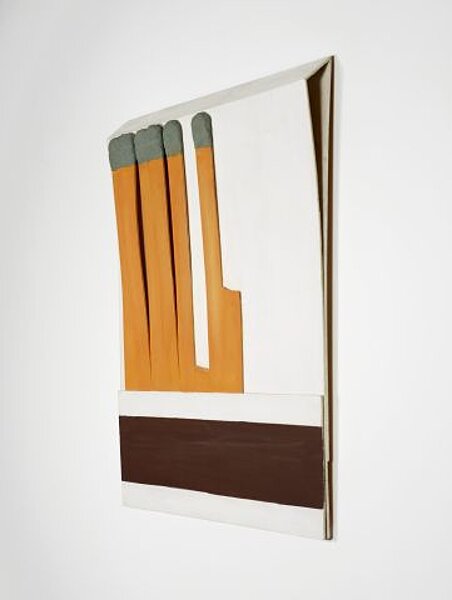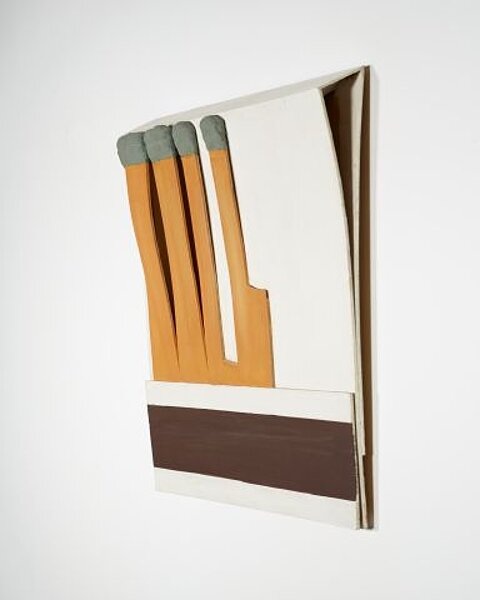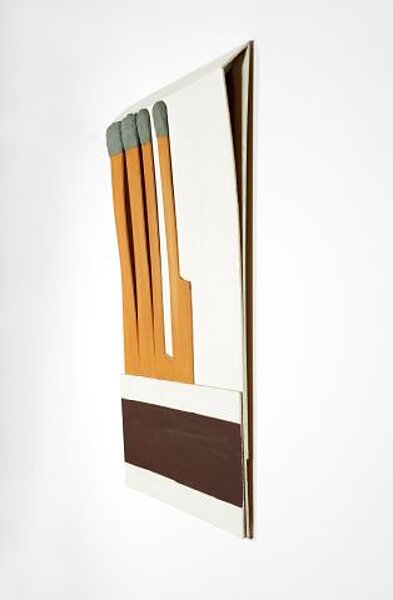
Hains, Raymond
Seita
1964
| Object description | Wood, plasticine, oil paint on wood |
|---|---|
| Dimensions |
Rahmenmaß:
height: 105,3 cm,
width: 95,3 cm,
depth: 12,5 cm
Objektmaß:
height: 95 cm,
width: 86 cm,
depth: 7 cm
|
| Year of acquisition | 1978 |
| Inventory number | B 423/0 |
| Creditline | mumok - Museum moderner Kunst Stiftung Ludwig Wien, ehemals Sammlung Hahn, Köln |
| Rights reference | Bildrecht, Wien |
| Further information about the person | Hains, Raymond [GND] |
| Literature |
Museum der Wünsche museum moderner kunst.SAMMLUNG HAHN LE NOUVE AU REAL ISME I Love Pop. Europa-Usa anni '60. Mitologie del quotidiano Nouveau Réalisme. Schwerpunkte der Sammlung |
In 1964 Raymond Hains exhibited his huge matchbooks for the first time, in the Venice Galleria del Leone. The titles of these series “Seita” and “Saffa” are acronyms of a French-Italian tobacco monopoly. This invitation cards to the exhibition were initially to name only “Seita” and “Saffa” as “fictional artists and arsonists,” Hains said, with the artist presenting himself as their agent. “Seita” is the monumentalization of trivial everyday objects. Matchbooks are small advertising gifts with little value and yet also a highly complex product. The outer side of this booklet laid open here would usually show the logo of the company being advertised. Hains presented his matchbooks twenty times larger than life, and yet wished them to remain as realistic as possible. He used wood to make the matches in a wooden comb, and he painted their tips in bright gray. The brown striking surface seems to be used, as if the missing matches had just been lit. Raymond Hains is a major nouveau réalisme artist best known for his torn posters. The “affichistes” began to critically explore the world of consumer goods and advertising in the 1950s, making it the subject of their art by simply collecting posters and the background onto which they had been pasted and taking them from the street into the gallery. In his matchbook series, Hains is also referring to the tradition of nouveau réalisme—he declares a valueless free gift a work of art simply by enlarging and defamiliarizing it.
© mumok – museum moderner kunst stiftung ludwig wien
